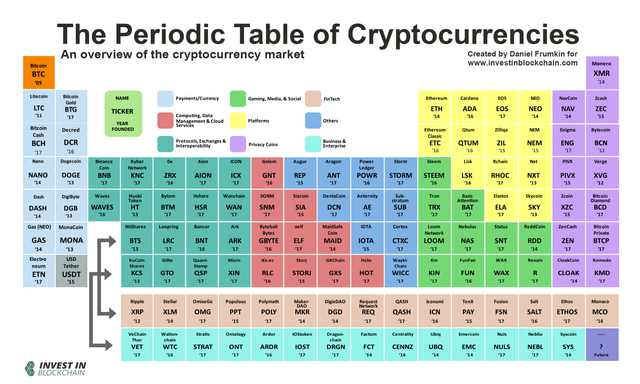
The Periodic Table of Elements consists of 118 elements that fall into 8 different categories.
Try as we might, 8 categories couldn’t quite cut it for cryptocurrencies, but we managed 9. These categories are listed below, along with brief explanations of the factors that contribute to a coin or token being included in a given category.
| Currencies – Coins used primarily for payments and to store value.
| Protocols, Exchanges, and Interoperability – Projects building decentralized infrastructure to exchange cryptocurrencies and enable communication between different blockchains.
| Computing, Data Management & Cloud Services – Projects related to computing, data storage and security, and cloud services including file storage and cloud computing.
| Others – Projects that didn’t fit into any of the other categories. These include prediction markets, oracles, betting platforms, and AI-related projects.
| Platforms – Smart contract and decentralized application (dapp) platforms.
| Gaming, Media, and Social Networking Platforms – Projects related to the gaming industry, online content publishing and distribution, and social media.
| Privacy Coins – Currencies with features to make transactions anonymous and/or untraceable.
| FinTech – Financial services and technology.
| Business/Enterprise – Platforms meant to help businesses improve efficiency, transparency, and security, among other things.